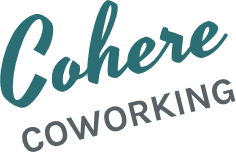
Not feeling free to unplug and problems with communication, collaboration, and loneliness graced the top of the list of troubles for Buffer’s State of Remote Work in both 2020 and 2021—but they are not the only hurdles that remote workers encounter on a regular basis. In both years, difficulties with distractions at home and navigating different time zones added up to trouble for 22% of respondents.
Distractions in the home environment are plentiful; the call of the refrigerator, the insistence of a playful pet, children to cater to, laundry piling up in the other room, and the easy availability of podcasts to listen to and entertaining shows to binge while poor management of time differences in business dealings can lead to frustration, resentment, and even burnout.
Although not included as an option in 2021, for 3% of individuals that answered the survey in 2020, finding a reliable internet connection was their most significant challenge. A locally managed broadband service is in the process of installing fiber optic cables throughout Fort Collins, making it easier to get reliable Wi-Fi. Unfortunately, that doesn’t apply to all of our surrounding communities, and remote workers often conduct business from other locales that may or may not have reliable internet.
Fortunately, none of these situations presents an insurmountable circumstance. In this section of Remote-First Fort Collins, we look at different options for dealing with these three common challenges for remote workers in Fort Collins and beyond.
Neutralizing Distractions
Distractions and interruptions are costly. Unlike intentional breaks—in which you frequently return to your work more focused, relaxed, and productive—interruptions are more likely to harm your overall productivity and leave you feeling tense and scattered.
According to Professor Gloria Mark of the Department of Informatics at the University of California, Irvine, research indicates that it takes an average of 23 minutes and 15 seconds to get back to a task after each interruption. Researchers discovered that not only did distractions reduce productivity, but they also increased stress and frustration.
Fortunately, there are several ways to reduce or control the number of distractions while working remotely. Here are six ideas to get you started:
· Create an established workspace
Creating an established workplace helps to prevent distractions and improve productivity in several different ways. A dedicated workspace ensures that all of the equipment that you need to do your job is close at hand and help you to more easily settle into your workday. If well-placed, it can also help provide a buffer from the rest of the activity in the house, so you can keep your focus on your work.
· Effectively manage email and texts
Choosing to answer every email and text as they come in can quickly become overwhelming. While it may seem like it only takes a minute or two to answer, remember that each interruption takes an average of over twenty minutes to recover from. Setting aside blocks of time specifically for these activities will help prevent them from taking time from your other important projects.
· Establish clear boundaries
Establish clear working boundaries with both the people you live with and the people you work with. Use your calendar to block off time for work and avoid television and household chores during your work hours. Let clients and colleagues know when you answer emails and phone calls—and when you don’t. Clarify with housemates ahead of time when you will be occupied with work.
· Leave the house
Getting out of the house not only helps to insert some novelty into your day and give you a new perspective, but it can also help to neutralize distractions. Temporarily moving your workspace, whether that be to a coffee shop, the local library, or a coworking space like Cohere Coworking, will get you away from household distractions like laundry, a cluttered kitchen, or noisy neighbors.
· Start fresh each workday
It is easier to resist interruptions and stick with our plans when we are feeling our best. Getting enough sleep at night and establishing an energy-boosting morning routine will help you stay productive and positive throughout the day. For best results, include a healthy breakfast for better concentration, some sort of physical activity as an energy booster, and a little time to relax or meditate before starting work.
· Turn off or distance yourself from electronics for deep focus
Cell phones and social media can be great tools for keeping in touch with friends, family, and colleagues, but they can also be endlessly distracting. When you have work that requires deep focus, consider moving your electronic distractions to another room, or setting up blockers on your computer so that you aren’t tempted to go to your favorite time-wasting websites.
Tackling Time Differences
One of the greatest benefits of working remotely, according to at least 25% of those surveyed in both 2020 and 2021, was the ability to work from anywhere. Being able to work from anywhere often means you are doing business with people who live in different areas—and different time zones. Juggling schedules becomes a bit more challenging when your morning is the middle of the night for your colleague or client.
One strategy is to have a time zone talk with your colleague or client when you first start working together. Establish boundaries around when and how communications should occur and stick with them. If your hours are considerably different, consider utilizing an app like SMS Scheduler or Do It Later so you can schedule emails and text messages to arrive at a convenient time for the other party.
The months of March, April, October, and November can be particularly taxing for dealing with time zones. Those months are the start and end of daylight savings time, but each country starts and ends daylight savings time on a different schedule. Some countries, and even two states, Hawaii and Arizona, don’t observe daylight savings time at all. You can see an overview of daylight savings times for different countries at timeanddate.com.
Fortunately, there are many tools at our disposal to alleviate time zone troubles. Almost all smartphones come with a world clock that allows users to quickly determine what time it is in another time zone, and many of our digital calendars automatically take time zones and Daylight Savings Time into account when the appointments are added.
Wi-Fi Woes
For most of us to make a successful career of remote work we need a reliable and fast internet connection. We need to be able to research, communicate, attend meetings, and turn in projects, and we typically don’t have time to waste on a slow or inconsistent wireless connection.
Unfortunately, access to the internet does sometimes falter, even for typically reliable systems. There are several free resources available to check the status of your connection at the source, such as downdetector.com and Ismyinternetworking.com. In many cases, the problem is a home network issue and a simple reset to the router will correct the issue.
If you are a local member of a coworking space like Cohere Coworking, you automatically have a location with reliable Wi-Fi at your disposal. Not a member yet? Set up a free virtual or in-person tour here.
For those situations where the internet is legitimately down for you, whether due to the router, the modem, or the internet provider themselves, all is not lost. Most modern cities and towns are host to several businesses and public services that provide free wireless internet to their patrons, and Fort Collins is no exception. Some of the free wireless hotspots in Fort Collins include:
- Poudre River Public Libraries, including the public library located in Old Town Fort Collins.
- Edora Pool Ice Center
- Supermarkets and department stores like Safeway and Target
- Various coffee shops and restaurants including Old Town offerings such as:
- and many others!
You can also search a plethora of websites dedicated to recording the free hotspots in any given town. Sites like openwifispots.com and WiFi Map offer maps of wifi hotspots nearby.
Alternatively, you can use a workaround, such as tethering your cellphone to your computer to share its Wi-Fi capability or turning your cell phone into a wireless hotspot through the settings.
If you missed the last installment, click here to learn more about the importance of unplugging for remote workers in Northern Colorado, or click here to start the series from the beginning.
About the Author: Cohere member Penny Leigh Sebring is an experienced freelance writer, neophyte speculative fiction author, and a gatherer of information and imaginary friends.
